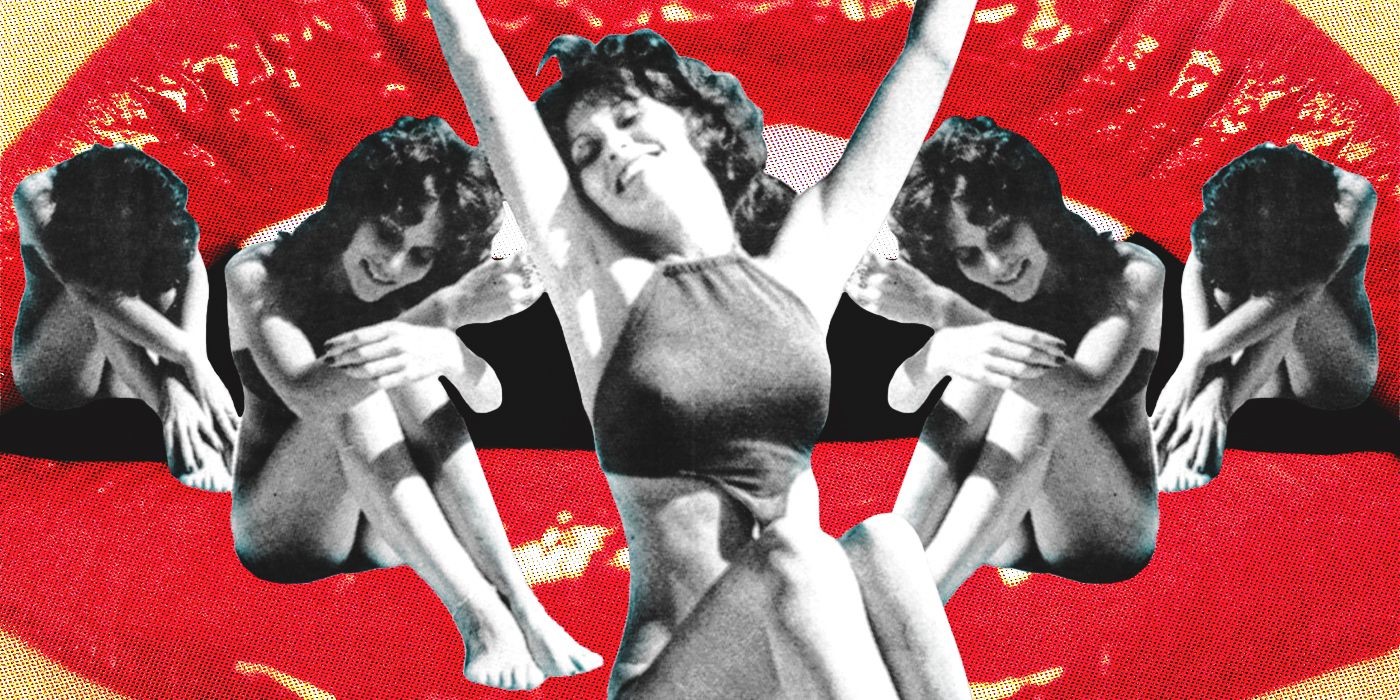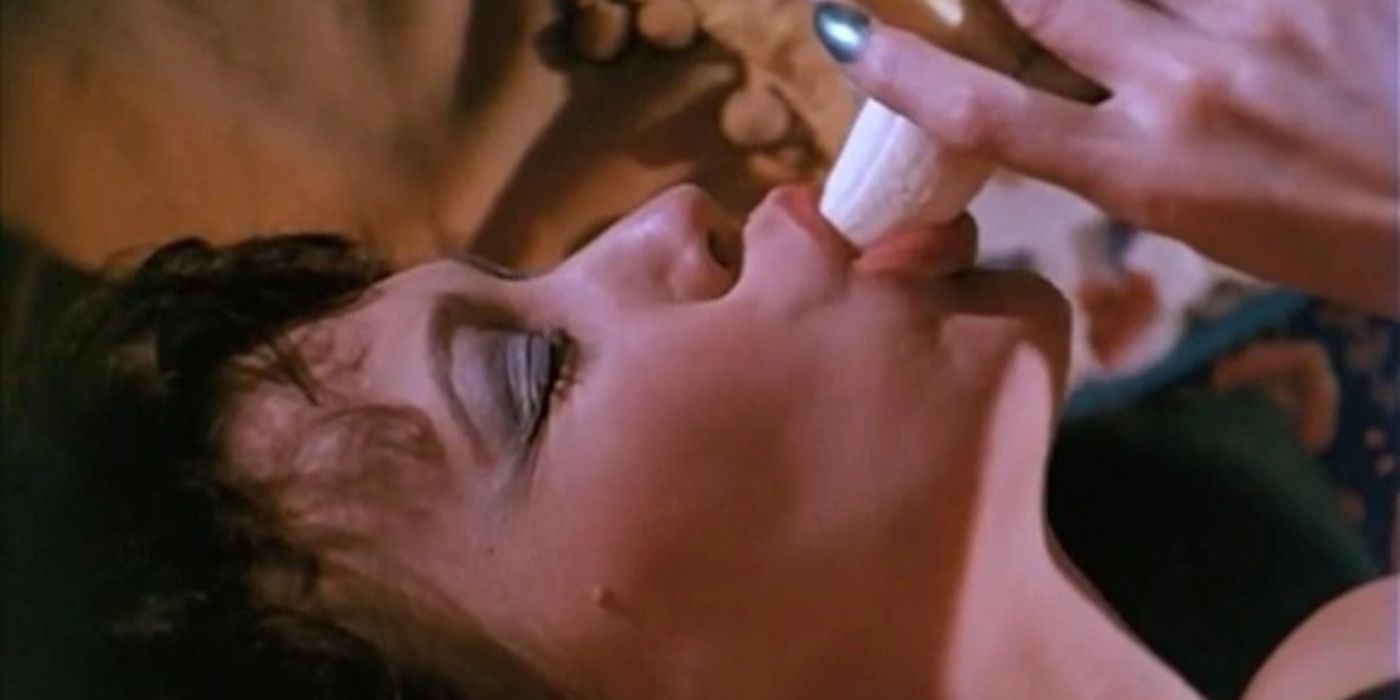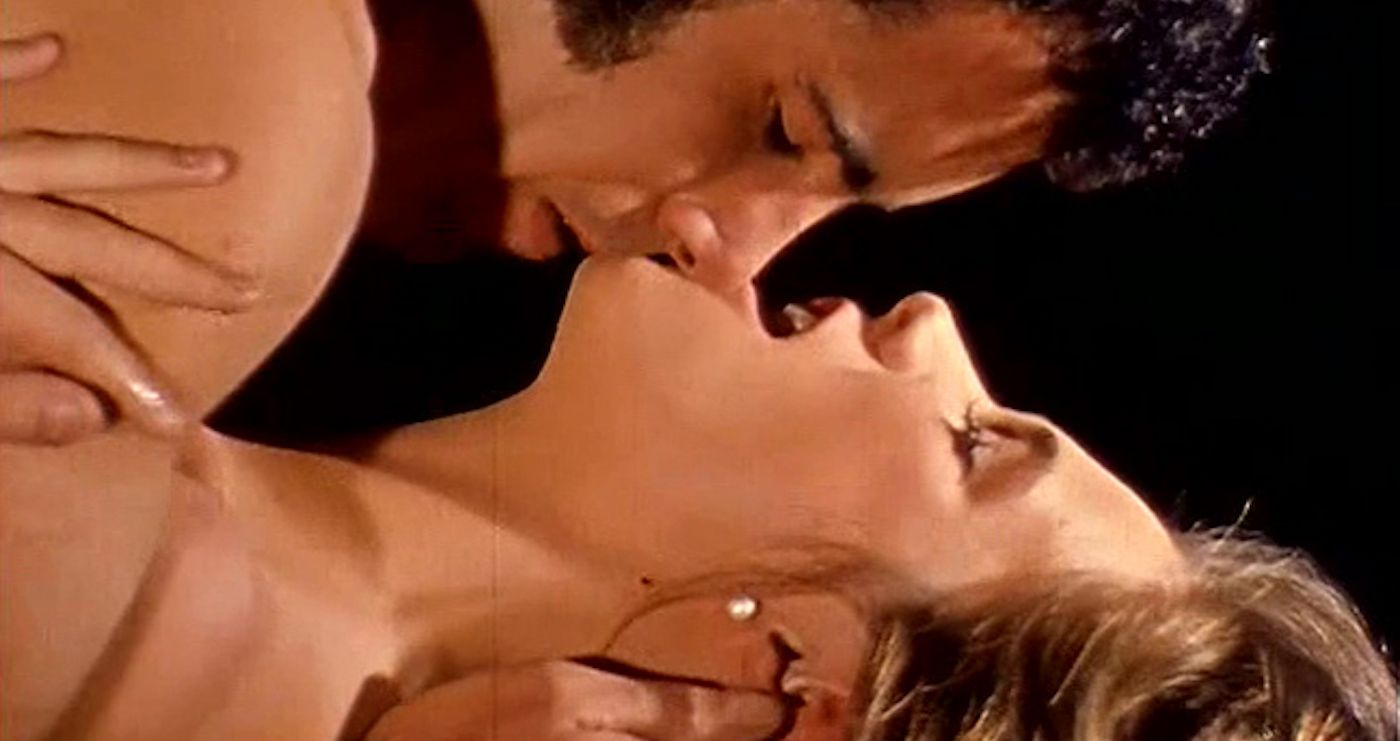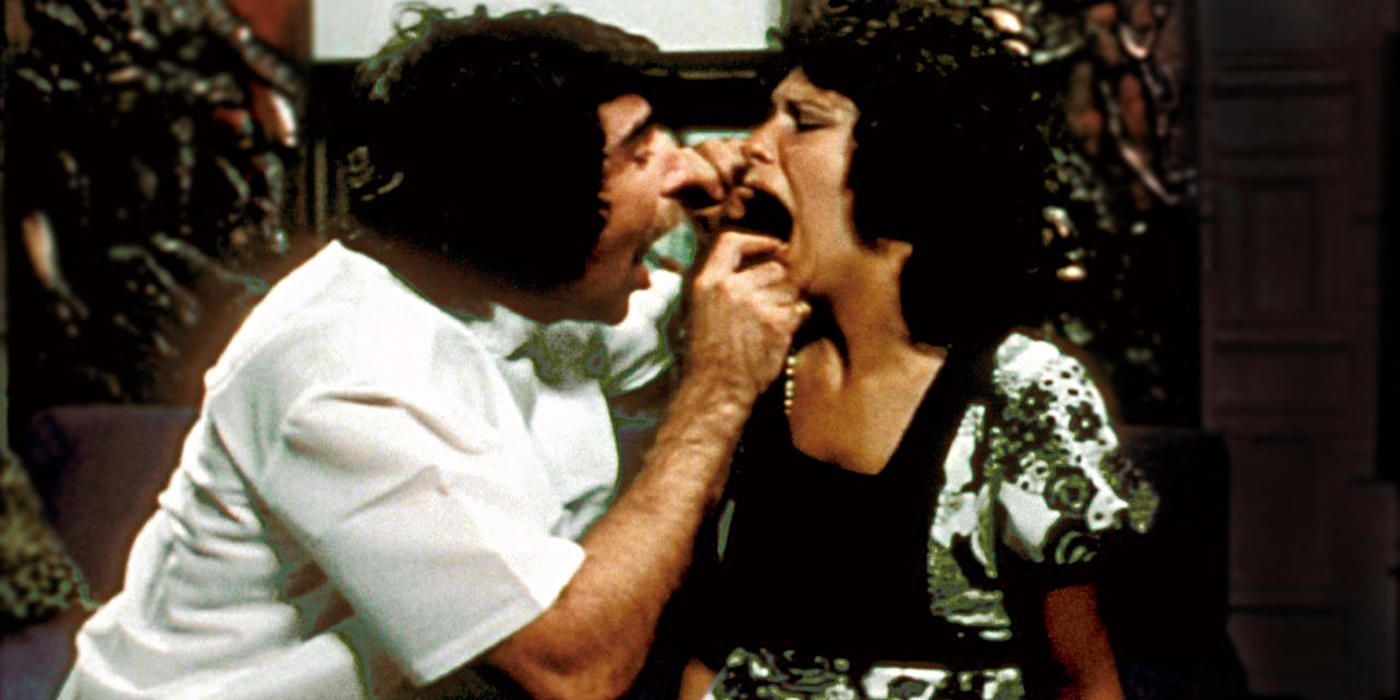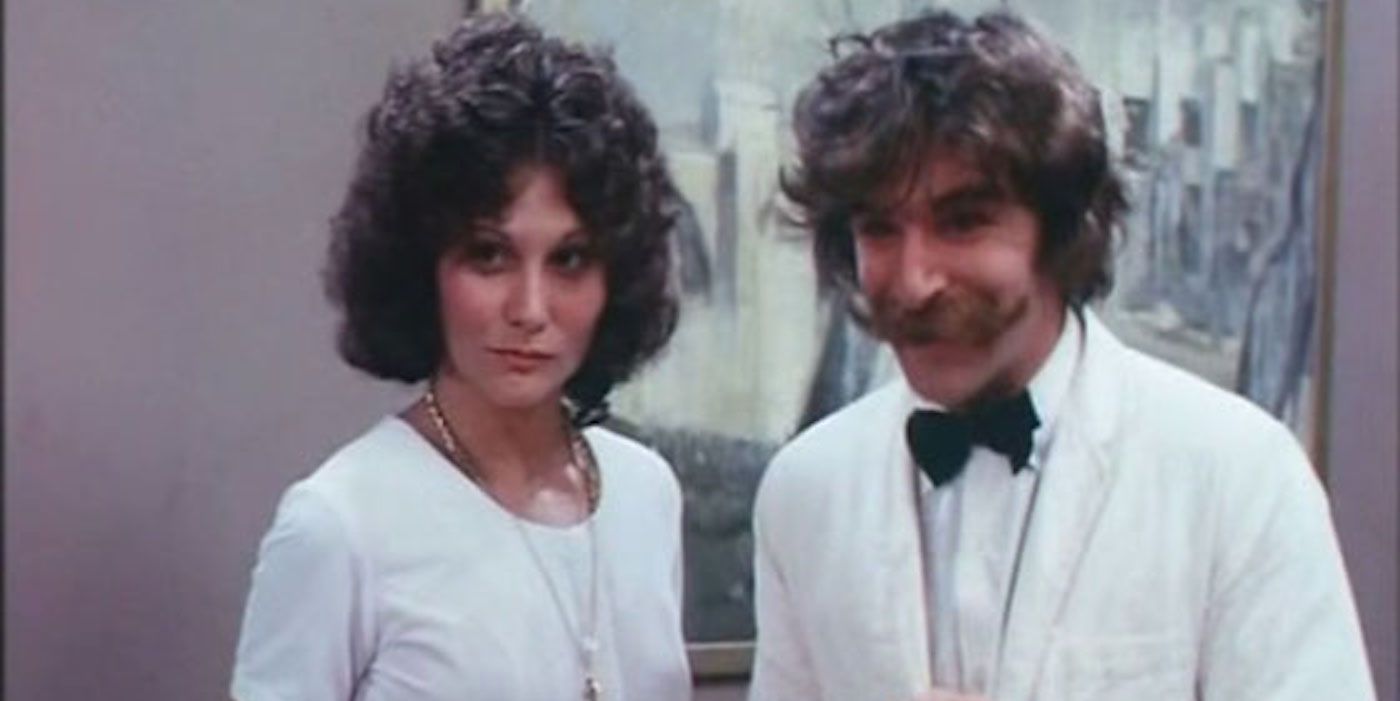In a 1995 interview with actress Georgina Spelvin, Screw Magazine editor Al Goldstein described porn as “a subspecies.” “Endangered,” Spelvin laughed back, “it’s always been endangered!” By this point, more than twenty years had passed since the adult film industry emerged from the underground, and it had since receded to its own little category, although on a far wider scale than ever before. This was the era of Vivid Girls, of adult actors being household names, but despite this mainstream validation, it had failed to live up to what many had hoped it could achieve. “I thought that [The Devil in Miss Jones] was the precursor to erotic films being integrated in Hollywood; I was wrong,” said Goldstein. Indeed, this sentiment had been shared by many artists of the early ‘70s. Established by the countercultural iconicism of Andy Warhol, there was hope that adult film would become a genre of mainstream cinema. It was not to be. But in the meantime, history was to be made by an era dubbed 'Porno Chic."
The mid-’60s was a turning point in western culture. London was swinging, San Francisco was the nucleus of the American hippie movement, and the baby boomers were exploring many new outlets for self-expression and exploration. The sexual revolution was central to this cultural transformation, in which social taboos surrounding sex were challenged and broken. Warhol was a key figure in this environment, and following his films Eat and Sleep, he decided his next experimental feature would be Fuck, later titled Blue Movie, in 1969. It did exactly what it said on the tin: a man and woman spend several hours in an erotic entanglement. It was the first movie containing unsimulated sex to receive a theatrical run, and while many were outraged, it proved to be the start of an entire industry that, in one form or another, is as widely consumed now as it ever has been.
Of course, photographic pornography had existed for as long as photography had, but until this point, had been an underground affair. People made pictures and films for their own amusement, to show on a projector at parties, or to be sold under the counter in specialist shops. In the 1950s, pinup model Bettie Page and her associates were embroiled in legal proceedings under the Kefauver committee, which considered pornography to be a moral disgrace and a serious danger to the public. But by the late ‘60s, censorship was becoming a contentious issue, with artists and the public alike increasingly challenging the right of politicians and lawmakers to govern the material they were allowed to view.
The movement that was given a push-start by Warhol truly came into its own in the summer of 1972. In June of that year, a movie called Deep Throat was released in the US, and it became an overnight cultural sensation. A silly, bubbly film whose tone is more in keeping with the Carry On movies of the ‘60s than with Warhol’s work, it is the story of a young woman (Linda Lovelace) who cannot achieve a climax. When a wacky doctor discovers that this is because her clitoris is in her throat, she is introduced to a world of sexual fulfillment that hinges on her giving deep throat - a term that didn’t even exist prior to the movie. It was written and directed by Gerard Damiano, an Italian-American former ladies’ hairdresser whose many personal conversations with clients revealed a sexually-restrained social undercurrent. He recognized a need for sex to come out into the open and set about establishing himself as a blue filmmaker. With his finger on the pulse of the early ‘70s desire for a legitimate, over-the-counter sex industry, he would go on to be the brains behind two of the three films that characterized the porno chic era.
Just a few weeks after Deep Throat caused shockwaves throughout America, Behind The Green Door came out. A slicker, more serious sex movie by the Mitchell Brothers, it follows a young woman (Marilyn Chambers) who is kidnapped and taken to a theater where she enjoys a lengthy orgy as masked patrons do the same in the aisles. With barely any dialog and an undeniably more erotic tone than Deep Throat, it is shadowy and atmospheric, clearly aiming to be more than a cheesy sex movie with goofy one-liners. In the race toward mainstream sex cinema, it was a step in the right direction. Next came the picture that would pull out all the stops to establish porn as a legitimate genre of cinema.
The Devil In Miss Jones is probably the best porn movie ever made. It embodies everything that the rapidly-expanding adult genre of the early ‘70s was ideologically aiming for: it is a real movie…with sex. A virgin (Georgina Spelvin) commits suicide and encounters a guardian of Hades, with whom she arrives at a bargain: if she is damned to hell for her means of death, she can borrow time back on earth to truly earn that damnation, and experience all the carnal sin she never had. What begins as a spiritual awakening ends as eternal torment in the form of impotence. It was Damiano’s second big picture, and within a year of Deep Throat, he had evidently honed his craft to a staggering degree.
He wrote the overly philosophical script - which some critics, like Addison Verrill, have posited is based on Jean-Paul Sartre’s No Exit - and even had a cameo as a frigid figure of damnation in the final sequence. Spelvin brought professional theatrical training and delivered the performance of… well, a real actor. This wasn’t your average tits-and-ass movie with cheesy come-on lines; it was theater, and clearly intended to stir far more in its audience than just titillation. Critics were impressed, and the public was entranced. Within a year of porn hitting the mainstream, it had already achieved an unexpected degree of sophistication. Perhaps Devil proved that pornography was capable of being more than an overcoated trip to a specialist book store or projection on a bedsheet in a buddy’s basement on a Saturday night.
The leading ladies of these three movies were each iconic in their own individual ways and were catapulted to overnight fame. Linda Lovelace - although far from even passable as an actress - became a star for her (at the time) unusual ability to perform deep fellatio without gagging. As a young hippie chick with a sleazy husband, she tried to use her fame to promote sexual freedom and all the ideals of hip early ‘70s life. Her story would take a very different turn in later years. Marilyn Chambers started out as a model for the Ivory Soap commercials, so the juxtaposition of her family-friendly origins and her star turn in porn was a huge talking point and brilliant marketing gimmick.
She went on to enjoy a very long career in the industry - even taking up the sloppy seconds of Lovelace’s aforementioned sleazy husband - and doing the unthinkable by breaking out into mainstream film, notably in David Cronenberg’s Rabid. Georgina Spelvin was the enigma of the scene: a 36-year-old classical ballerina-turned-protest filmmaker, she was traditionally too old, too normal, and too classy for the industry. She embodied a quip from Deep Throat: “how’d a joint like you end up in a girl like this?” She too would enjoy a sporadic career in both adult and regular films, before going into publishing and writing a memoir.
These three movies defined a significant cultural event. The movement began in societal, artistic, and (admittedly) financial ambition, and certainly enjoyed a torrent of free press thanks to word of mouth and a ripple effect out into the wider world. What was unexpected to filmmakers who were used to such a "bedsheet" culture was the international influence - and outrage - that their movies would bring about. For as quickly as the porno chic movement had gathered steam, its undoing was being cemented in the legal world.
The impact of Deep Throat cannot possibly be understated. Late-night talk-show hosts were talking about it, real critics were reviewing it, and most importantly, the public was flocking en masse to see what it was all about, from hippie students to curious housewives. They quickly realized that this movie was bigger than the sum of its parts: it was a symbol of legitimate sexual freedom, in which consenting adults could enjoy pornography without reproach. It was for this reason that many of Hollywood’s young liberals rallied around when the film inevitably attracted the ire of conservatives, censors, and even the law: they feared that if filmmakers could be prosecuted or even jailed for their art, that a serious breach of the first amendment was afoot.
Courts would see it differently: if Deep Throat was a symbol of sexual freedom to the masses, it was to be used as an example by politicians and lawmakers of what happens to radical thinkers. By the time all three "golden era" movies had been released to much fanfare, in the case of Miller v. California of 1973, the Supreme Court had tweaked its definition of obscenity to crack down on this booming new industry, and to this end, everybody from directors, actors, theater owners, and financiers were prosecuted for their involvement in smut-peddling.
Communities across the US were seething at the wide consumption of profane material. They deemed it indicative of moral and social disintegration, of the loss of good old-fashioned American values. Hippies and artists saw porno chic as an important step in creative freedom and expression; to conservative hand-wringers, it was basically the horsemen of the apocalypse; there were plenty of people in between who simply enjoyed this bizarre turn of events. In the documentary Inside Deep Throat, a sweet old housewife is interviewed outside a theater showing the movie, and declares, “I wanted to see a dirty picture, and that’s what I saw”. Divisive doesn’t even begin to describe the phenomenon of porno chic.
But filmmakers were getting tired. Between hounding from cops, condemnation from outraged activists, and being considered nothing more than gangsters and prostitutes, those in the industry were being worn down, and the world carried on changing at an alarming rate. The ways in which the public consumed media continued to evolve, trends moved away from art cinema towards mass appeal, and by the dawn of the ‘80s, a new and infinitely more sinister opponent had emerged in the form of the AIDS epidemic. Sex was no longer as fun and carefree as it once was; in fact, it could be deadly, and many considered porn to be perpetuating unsafe sex practices that would cause worldwide devastation.
Bloodied from constant legal battles but still determined to survive, it would ultimately be the evolution of home entertainment and video production that finally killed off porn cinema. Just as home video would later cause concern about lack of regulation, now it was enabling quick, cheap porn production that made proper blue movies obsolete. Nobody needed to go to a theater to watch porn anymore; they could do it from the comfort of their own homes, without the possibility of embarrassment in a public setting. It no longer required a proper production setup or considerable investment, just a camera and a few willing participants; the industry had basically slipped back to where it came from. What resulted was a market flooded with easily-produced, easily-consumed adult movies that had no real interest in being artistic, the kind that now constitutes around a quarter of all internet searches.
There have been a few examples in recent years of (mostly European) cinema integrating unsimulated sex, such as 9 Songs, Baise-Moi, Antichrist and The Brown Bunny, many of which were received as little more than attention-seeking gimmicks. But the early ‘70s was the perfect climate of social rebellion, personal freedom, and artistic expression, one that made history for many reasons and enabled this brief fling between adult cinema and the mainstream. An era that might be summed up by a line from Tea and Sympathy that Georgina Spelvin says in her memoir, The Devil Made Me Do It, Damiano quoted to her when filming wrapped on The Devil in Miss Jones: "Years from now, when you talk about this - and you will - be kind."

